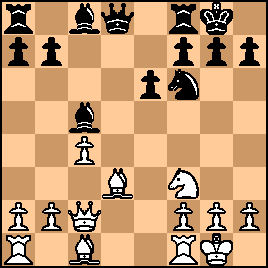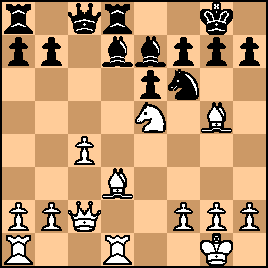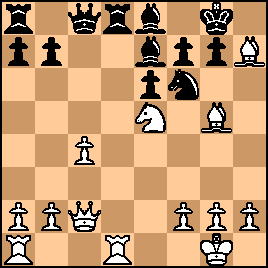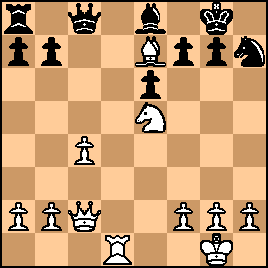KEG: Post II
9. dxc5
Pillsbury had great confidence that he would be able to outplay Tchigorin in the ensuing position, and indeed he did. But the text was still far from best. Instead of relieving the tension in the center, White would enjoy at least a small edge with 9. Bc2 or 9. 0-0 or 9. Qc2. Now, Tchigorin could have equalized: 9... Bxc5
10. 0-0 0-0
11. Qc2

click for larger view11... Be7
A surprisingly placid effort by Tchgorin, who had many ways to hold his own here, e.g., 11...h6; 11...Qe7; etc. After the text, Pillsbury began to go to town, and was very much in his element: 12. Bf4 Bd7
Another weak effort by Tchigorin. 12...Bd6; 12...Qb6; and 12...h6 were all much better. 13. Rfd1
13. Rad1, or perhaps 13. Ne5 immediately, are also worthy of consideration. 13... Qc8!
The sort of subtle move that made Tchigorin such a dangerous opponent. Among other things, it opened d8 to the Black Rook. 14. Ne5
It was sometimes said that if Pillsbury played the Queen's Gambit, he would have the game wrapped up as soon as he got to play Ne5. Not quite the case here, but the text was very much a key component of Pillsbury's arsenal in this sort of opening. 14... Rd8
All according to plan.
15. Bg5
15. NxB looks much simpler, but maybe he reckoned that Tchigorin would miss the tactical resources White has here, the position now being: 
click for larger view15... Be8?
A shocking error by so fine a tactician as Tchigorin. He would not have been in such bad shape after 15...h6. Well, Monte Carlo 1902 was a long tournament, and perhaps here in Round 18 Tchigorin was tired. (This may explain Pillsbury's blunder on move 30). Or perhaps Tchigorin was discouraged from his tough 99-move loss to Teichmann in the previous round that pretty much put him out of contention for a top prize. In any case, Pillsbury immediately pounced:
16. Bxh7+!

click for larger viewNot the hardest combo to detect, and Pillsbury of course spotted it. Now he wins a pawn: 16... NxB
Tchigorin did not perform like Tchigorin here. 16...Kf8 is somewhat better, but in any case Black ends up a pawn down. 17. BxB RxR+
18. RxR

click for larger viewThere were Bishops of opposite colors, and Black has potential counterplay, so perhaps the game is not a clear win for White. But a clearly discouraged Tchigorin continued his weak play, over the next several move, leaving no doubt about the correct theoretical outcome of this game. But won games don't usually win themselves, and--as we will see--it would soon be Pillsbury's turn to falter. | 




































